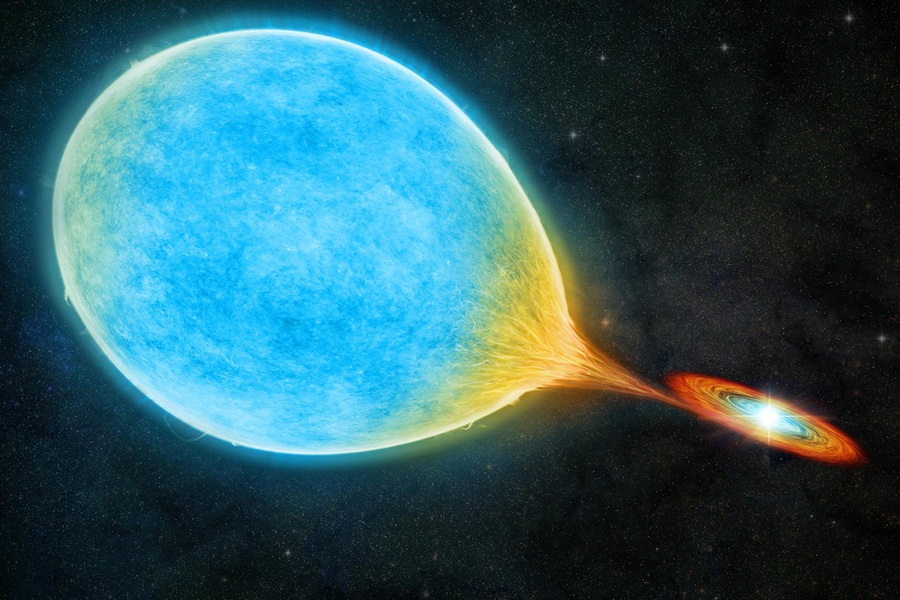Scientists have recently discovered a new system of cataclysmic variables (CV). It consists of white and red dwarfs, with matter flowing from the second to the first.

Cataclysmic variables in our galaxy
Astronomers report the discovery of a new cataclysmic variable system, designated SRGe J194401.8+284452, located about 1350 light-years away. The discovery was detailed in a research paper published on the arXiv preprint server on August 26.
Cataclysmic variables are binary star systems consisting of a primary white dwarf attracting matter from a normal stellar companion. They irregularly increase in brightness many times and then fall back to a resting state.
Such binary systems have been found in many environments, such as the center of the Milky Way galaxy, the vicinity of the Sun, and in open and globular clusters. Polars are a subclass of cataclysmic variables distinguished from other CVs by the presence of a very strong magnetic field in their white dwarfs.
J1944 system study
SRGe J194401.8+284452 or shortly J1944 was first identified in 2008 as an X-ray source. Subsequent studies of this source have suggested that it may be a pulsar wind nebula (PWN). However, recent observations have shown that it is too weak to be a PWN. Therefore, its true nature remains unsolved.
Therefore, a team of astronomers decided to investigate J1944 by making multi-wavelength spectral and photometric observations of this source.
First of all, observations have shown that J1944 experiences rapid spontaneous transitions between high and low brightness states in the optical and X-ray bands, remaining relatively stable between transitions on scales of months or years.
Moreover, the optical light curves of J1944 don’t show flare activity, but show regular variations in the emission intensity with a period of about eight minutes. In the high state, the optical spectrum of J1944 is almost completely dominated by disk emission.
Features and nature of the J1944 system
According to the authors of the paper, these findings indicate that J1944 is a cataclysmic variable that consists of an accreting white dwarf and an ungenerated late-type star that is a donor of accretion material.
“The presence of an eight-min period excludes the interpretation of the object as a binary system with a neutron star, expected to be a millisecond pulsar,” the scientists said.
Based on the data collected, astronomers have determined that J1944 is a dense binary accretion system with an orbital period of about 89 minutes. The mass of the white dwarf is estimated to be between 0.3 and 0.9 solar masses, while the mass of the donor star is not expected to exceed 0.08 solar masses. In general, the researchers concluded that J1944 is most likely an intermediate polar, with one of the shortest orbital periods among cataclysmic variables in this subclass.
According to phys.org


